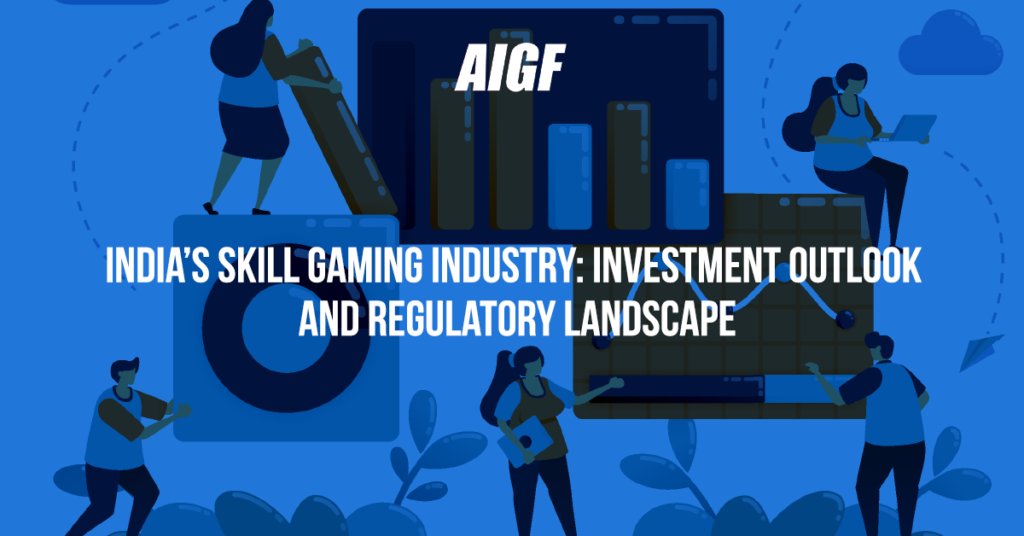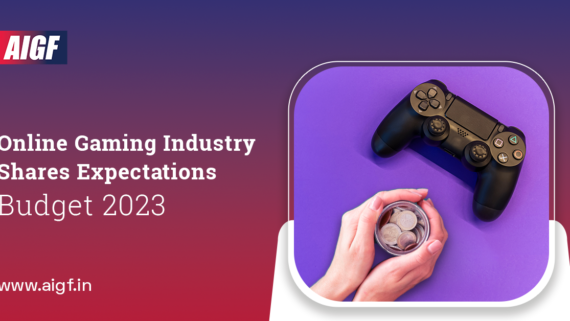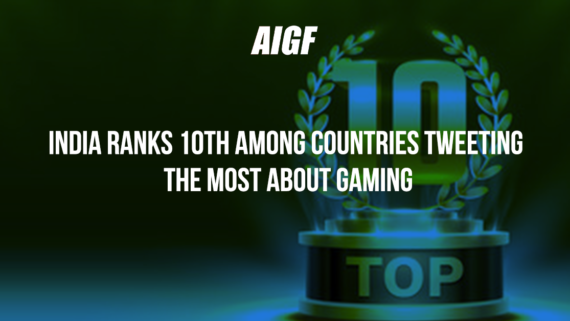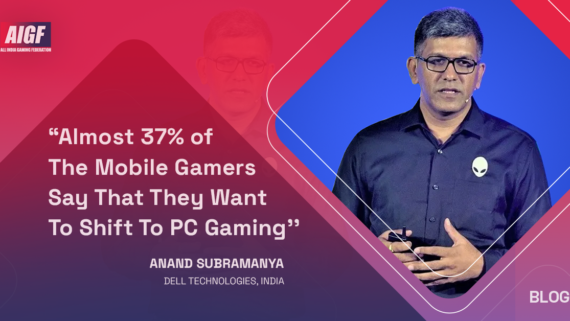In India, gaming is growing faster than most media sub-sectors, including OTT video, cinema, and home entertainment and audio. While India’s gaming market is, as of now, more modest than the US and China, it is worth about US $1.5 billion and is supposed to significantly increase in size to reach US $5 billion by 2025. This leap in market development will be supported by the “mobile first” phenomenon.
India’s Skill Gaming Industry Investment Outlook And Regulatory Landscape
The central government of India is purportedly considering setting up an administrative body for controlling the “skill gaming” industry to stimulate investments and safeguard player interests. As per the Business Standard report, the requirement for guidelines comes subsequent to increasing incidents of tax evasion and addiction because of skill gaming; India is among the world’s four biggest gaming markets.
The gaming industry will appreciate the move as administrative conviction will bring it authenticity. It will also increase investment scope while protecting the interests of skilled game players, whose population has grown from 360 million in 2020 to 510 million in 2022.
What is “skill gaming”?
Skill gaming refers to pay-to-play online games, including fantasy sports like MPL fantasy cricket, casual games, and games like rummy or poker, which require some use of skill.
In India, gaming is growing faster than most media sub-sectors, including OTT video, cinema, and home entertainment and audio. While India’s gaming market is, as of now, more modest than the US and China, it is worth about US $1.5 billion and is supposed to significantly increase in size to reach US $5 billion by 2025. This leap in market development will be supported by the “mobile first” phenomenon. A youthful buyer base, rising disposable incomes, the introduction of new modern gaming genres that are easier to learn and adapt to, cheap data, the rapidly expanding number of cell phone and tablet users, the growth of the influencer economy, and way of life changes as a result of the COVID-19 pandemic are all driving gaming’s popularity in India.
Market outline
Online gaming in India is among the nation’s quickest developing industries, with the possibility of creating income worth INR 154 billion by 2023-as far as rake fees are acquired-according to a joint report by EY and the All India Gaming Federation (AIGF) named, “Online gaming in India-The GST Conundrum.”
As per Statista, the market worth of the Indian skill gaming sector was around INR 79 billion in the financial year (FY) 2021-22, and is supposed to arrive at INR 150 billion in FY 2023-24, showing a CAGR of around 15%.
One more report by Mordor Intelligence proposes that the Indian gaming market was valued at an estimation of INR 79 billion in 2020 and is expected to arrive at INR 374 billion by 2026, enlisting a CAGR of 20.83% over the forecast period 2021–2026.
As far as user base, the number of online gamers in India is quickly growing, with the mobile gaming community starting to lead the pack. India has in excess of 560 million web users, making it the second-biggest internet consumer base on the planet. Inside this, the cell phone user base includes a mind-boggling 85% of the industry, trailed by PC users at 11% and tablet users at only 4%.
Mordor Intelligence saw that, as in 2021, India had an average of 220 million gamers spending an average of 42 minutes out of every day on mobile games, while Invest India has fixed this number at 303 million.
As per the World Economic Forum (WEF), mobile phones are the essential vehicle for the gaming market in India, upheld by admittance to affordable cell phones, developing at 15% yearly for the next five years. Plus, high-speed 4G web access supported by the world’s most minimal data tariffs has added to solidifying this pattern. This pattern additionally picked up pace during the pandemic, when a few lockdowns and limitations changed the scene of the online gaming industry in India. According to a survey referred to by Invest India, almost 45% of India’s mobile users began playing games on their cell phones during the pandemic.
Patterns in India’s mobile gaming market
Higher commitment with better features: A greater emphasis on familiar content, as well as visual and voice features, is assisting in the onboarding of new gamers and driving higher commitment.
India is emerging as a worldwide talent hub: The ability pool with gaming organizations has increased ten times over the last 10 years.
Influencers play a significant part: Influencer-driven user-generated content, live streaming, and the early yet developing INR 7.7 billion (electronic sports) esports industry are driving gaming reception and higher commitment.
New developments draw in user and investor interest alike. Investors are effectively molding the gaming space in India. It is estimated that roughly 33% of total gaming funding has thus far come in the first quarter of 2021.
investment outlook
A facilitative strategy system allowing 100% FDI in gaming, combined with government drives like the “Digital India” program, has empowered the development of the gaming industry in India.
Leading players
According to IBEF, the number of gaming organizations with a presence in India rose almost 10x starting around 2010, crossing 275 in 2020. Major players include Electronic Arts (EA) Sports, Mobile Premier League (MPL), Nazara Technologies, Halaplay, and so on. These organizations provide direct and indirect work to around 3,000 to 4,000 individuals. A report by The Economic Times recommends that within a reasonable time frame, the gaming industry could add a few hundred thousand positions.
Presently, there are 920 gaming startups in India, with Mumbai (Maharashtra) filling in as the headquarters for top players in this sector.
investment patterns
During the August 2020–January 2021 period, the gaming sector in India pulled in US $544 million in investments. According to the Maple Capital Advisors report, growth capital funds like Chrys Capital and TPG have taken an interest, while various others have begun to check out the gaming industry. As of late, Asian e-sports and mobile gaming platform MPL, endorsed by Virat Kohli, raised US $95 million in a Series D round driven by Composite Capital and Moore Strategic Ventures at a valuation of US $945 million. Another striking venture incorporated US $68 million into Nazara Technologies (January 2021). GameEon Studios, dealing with India’s most memorable triple-A title, Mumbai Gullies, got a subsidy of INR 25 million in September 2021.
How is online skill gaming regulated in India?
As of now, there is no uniform government regulation controlling the skill gaming industry in India. Given the market size and user base, as well as rising investor interest, it is essential that India lay out a powerful, very organized, and uniform administrative scene to relieve difficulties like illegal tax avoidance, youth gaming addiction, and occurrences of misrepresentation and so on.
The obsolete Public Gambling Act, 1867 and the Prize Competitions Act, 1955 currently oversee India’s online gaming industry at the government level while shifting regulations in various Indian states override these Acts. This is on the grounds that state legislatures in India are enabled by the constitution to administer betting. Nonetheless, given recent advances in gaming innovation and increased user base penetration, these regulations have become obsolete.
It is being accounted that the public authorities’ accepted guidelines for the gaming industry ought not be shared with a financial sector controller as it very well may be beyond the ambit of their core ability. In any case, it is being speculated that the central government is probably going to bring online games inside the domain of the Prevention of Money Laundering Act (PMLA), expecting organizations to conform to KYC (know your customer) standards.
The All-India Gaming Federation (AIGF), a self-administrative zenith industry body for online skill gaming in India, established in May 2016, states that all associates giving online skill games, essentially online fantasy sporting events, online rummy, casual games, and poker games, should be duly integrated/enrolled in India or should have a business presence in India. It likewise sets out specific limitations on participating, stating, “participation in pay-to-play game formats in India will be confined to users in just those Indian states where the pay-to-play formats of the games are lawful.” The pay-to-play member’s game format will not be presented to or coordinated with anyone under the age of 18.”
High court decisions topple state boycotts.
A few states in India, including Kerala, Tamil Nadu, Madhya Pradesh, and Karnataka, have endeavored to impose restrictions on online gaming with money-related stakes, following objections from troubled guardians of kids’ addiction to playing these games.
Also, a few instances of individuals going into debt because of their addiction to fantasy sports and online skill-based games have additionally caused alarm. Notwithstanding, the respective local boycotts were struck down by the state high courts as unconstitutional.
Presently, the gaming industry in India is taking a gander at vulnerability and insecurity and definitely anticipating administrative change, which consequently will work with an enormous scale of investments.
Credit: India Briefing











Comments
Comments are closed.